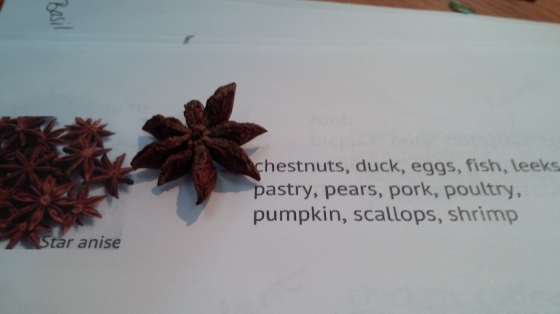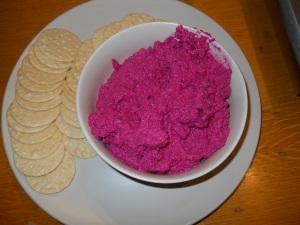When I was first learning how to cook it was hard for me to tell if a recipe was going to be any good just by looking at it. Any time I wanted to make a dish for the first time I wound up reading recipe after recipe to compare and contrast the ingredients. I still do this to some degree, but by now I’ve gotten used to flavors that pair well together. Unless I’m jumping into an unfamiliar ethnic cuisine, I’m rarely surprised by a combination of ingredients. Now that I’m confident in the kitchen, my next culinary adventure is creating my own recipes. To that end, I recently took an Herbs and Spices class through Portland’s Culinary Workshop. I also received The Flavor Bible as a holiday gift, which is a helpful complement to the class. So what am I looking for when I scan an ingredients list in a recipe? Well, there are a few basics every cook should know.
First, do you know the difference between taste and flavor? Taste is what our taste buds can physically detect. There are only five essential tastes: sweet, salty, sour, bitter, and umami. Flavor is the combination of taste and aromatics. Basically, the smell of our food significantly contributes to its flavor. When I read a recipe, the first thing I look for is a balance of the five elements of taste. I also look for an interesting, but compatible, variety of textures. Finally, I’m hoping to find combinations that make sense. That’s where The Flavor Bible and the Herbs and Spices class comes in. Melinda Casady, co-founder and instructor at Portland’s Culinary Workshop, pointed out that if a combination hasn’t occurred before, there’s probably a reason. Food is central to human life and we’ve been cooking our food for literally hundreds of thousands of years. Although food can be innovative, the best meals still rely on some basic principles for success.
I’ll give you an example. Friday night I had dinner at Grain & Gristle and I ordered their grilled chicories, beets, bitter chocolate, pistachio, and balsamic. I’ve never tried this dish before, but I had a sense that it would be delicious. The chicories and chocolate I knew would be bitter, while the beets, pistachios, and balsamic are all a little sweet. The pistachios also added some salt and crunch. Sure enough, the result was a well-balanced, savory and flavorful dish.
Learning what pairs well together can be a lifelong process, but there are some great resources out there if you want some inspiration. Melinda recommended Culinary Artistry, which is often used as a textbook in culinary schools. Besides books, the next best resource is your self! Think about your favorite foods and what ingredients make them irresistible. In the class we walked through some of the most common fresh herbs and dried spices and discussed common pairings. When Melinda got to thyme I immediately thought “oranges.” This is not a particularly novel combination, but I know from experience that it’s a delicious one.
I learned a few helpful things in this class that I would like to share. Just as salty balances sweet, sour balances bitter. Melinda’s example was using a lemony (sour) dressing on a kale (bitter) salad. Sweet can also help mellow out hot (honey and cayenne, for example.) Consider the strength of a spice or herb before pairing it up—rosemary has a heavy pine note that will overpower delicate dishes. Fresh herbs typically go in at the end of cooking or are enjoyed raw, while spices go in at the beginning of cooking. Buy whole spices and toast and grind them yourself when you can. In class we compared the freshly toasted spices with pre-ground spices and the difference in aroma was significant. You can use a coffee bean grinder if you have one that comes apart and can be easily cleaned.
The class was a confidence builder as much as anything. I was reminded of how much I’ve learned about flavor and food pairings in the past decade of cooking. The best part is, gluten has nothing to do with taste or flavor. Being diagnosed with celiac hasn’t kept me from enjoying flavorful food. Now that I have some new knowledge and inspiration, I look forward to sharing some of my own recipes on the blog in the year ahead. Some combinations I’ll be ruminating over in the meantime…
- Juniper and Lamb
- Nutmeg and cauliflower
- Mint and Duck
- Lemongrass and Coconut
Do you have a combination that you love? Share it in the comments! Maybe I’ll be inspired.







